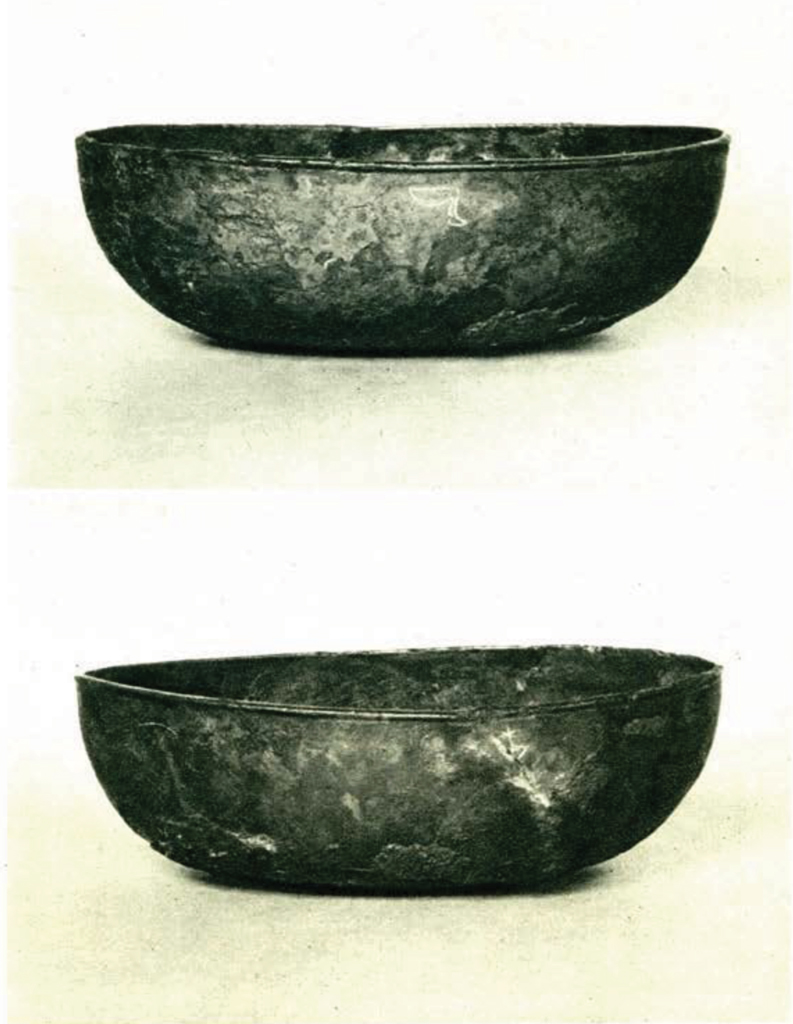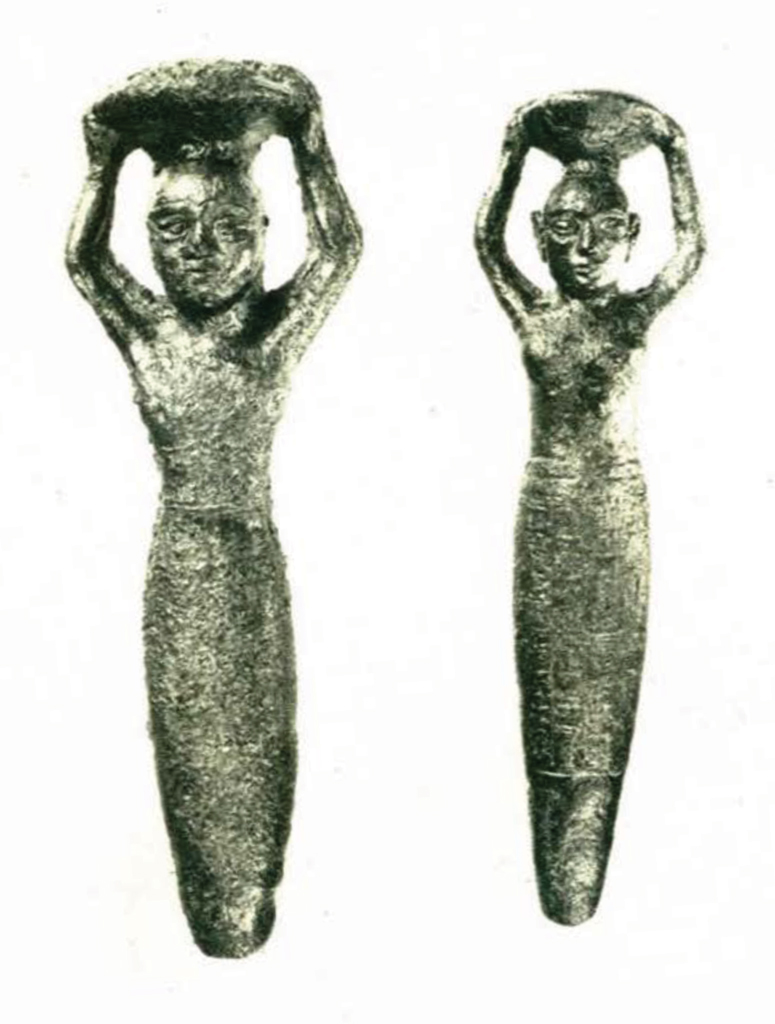IN the Museum Journal for December 1929 there were described the methods used and results obtained in preserving and restoring the silver vessels and objects found in the Royal Tombs at Ur. This work has been going forward steadily in the Museum’s specially equipped laboratory under the direction of Dr. Graham, of the University’s Department of Chemistry, assisted by Mr. Witte of the Museum Staff. With completion of the work on the silver objects, attention was concentrated upon those of copper and of bronze, with extremely satisfactory results. Much valuable evidence has been reclaimed by treating these in electrolytic baths over long periods and later by cleaning, polishing and, when required, repairing. Not only are the vessels restored to a close approximation of their original form and appearance, but the treatment insures their proper preservation for a great while to come.

Museum Object Number: B17406
We reproduce on Plates II and III three pieces lately removed from the baths and finished for inclusion among the other exhibits of the find from Ur. The first is an ovoid bowl, of a form already familiar in gold, silver, and stone from the Pre-dynastic Royal Tombs. This is, however, the first example in copper that can be shown relatively intact and is of particular interest for the two marks, one on either side, which were revealed by the chemical treatment. In the upper part of Plate II is shown the side of the bowl that bears the mark of a bull’s leg; this same mark has been found in certain gold, silver, and bronze vessels and weapons in the tomb of Mes-Kalam-Dug, and was apparently a mark placed on a piece to designate the King’s property. On the other side, however, there appears a mark, somewhat damaged by a defect near the lip of the vessel, but sufficiently clear to be identified as Nannar, the character for Moon god, indicating that this piece was perhaps dedicated to the service of the god in his Temple. This mark is not found on the silver vessels or weapons that bear the bull’s leg mark, and it was entirely obscured by corrosion which only electrolytic treatment could have removed successfully; it is thus that modern scientific research is of constant assistance to archaeology.

Museum Object Numbers: B16218 / B16216
In Plate III are illustrated two copper foundation figures, so called ‘nail-figures’, also from Ur, but of a later date than the inscribed bowl. Originally badly corroded, they have also been subject to prolonged treatment in the tanks, and large parts of the inscription around the lower part have been revealed, while on both, the delicate sculptured details are more finely brought out. The one on the right bears an inscription mentioning the name of Dungi (about 2350 B.C.) and his dedication of the building, in which it was discovered as a foundation deposit, to the goddess Dim-ta-ba. The one on the left is uninscribed.
This particular type of foundation figure, with arms upraised supporting a workman’s basket filled with earth, seems to have been in use from the time of Gudea. The king, in dedicating a sacred building, customarily bore in person one of the first baskets of earth. Since the figurines are customarily feminine it is supposed that they represent foundation guardians, divine or semi-divine goddesses to whom the king delegated the task of watching over the building he had consecrated. Since such figures or the tablets customarily associated with them bear an inscription revealing the name of the king who had built the building and the uses to which it was dedicated, it is hardly necessary to point out that they are of great archaeological value and that the importance of deciphering the inscription is not small.

